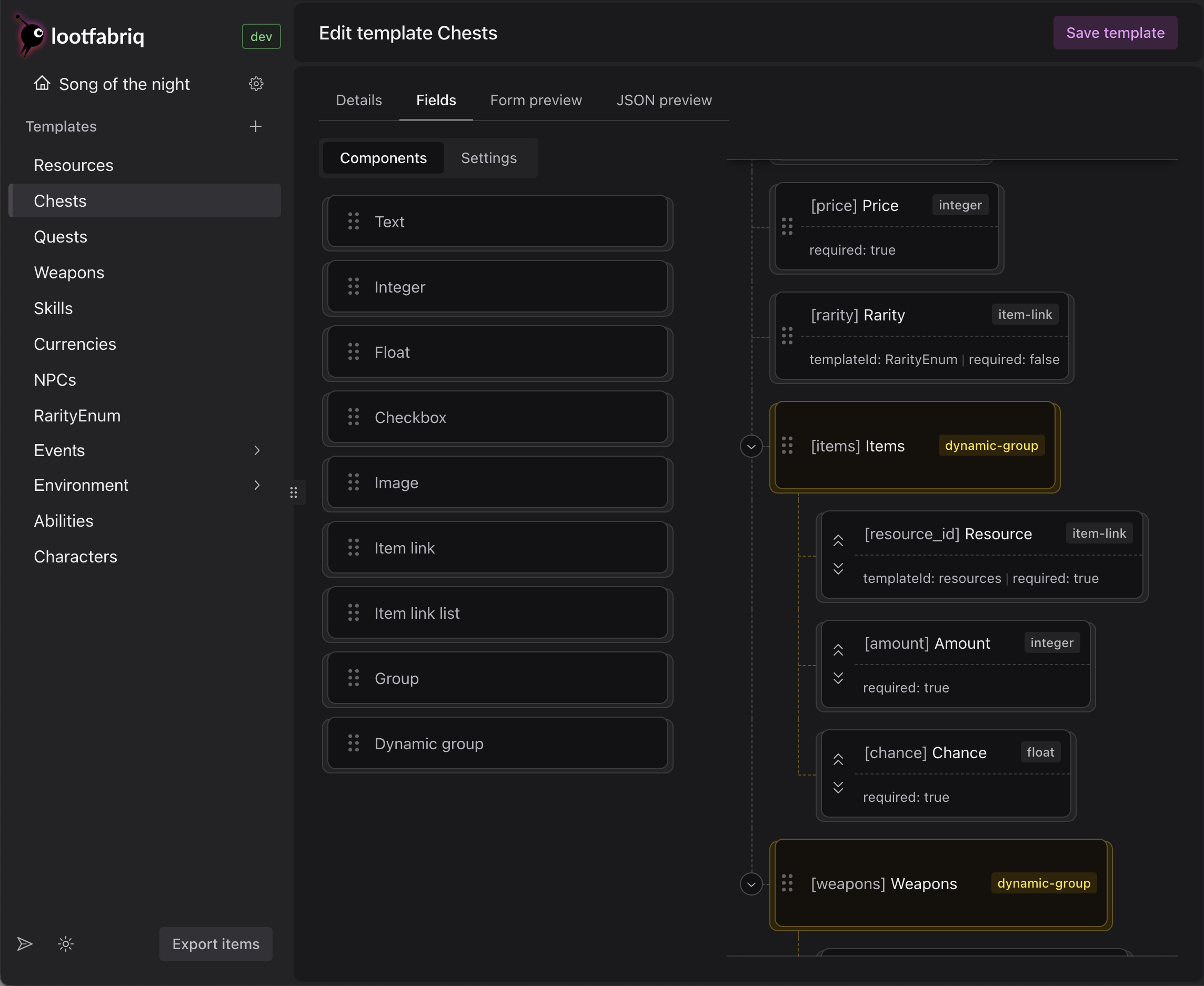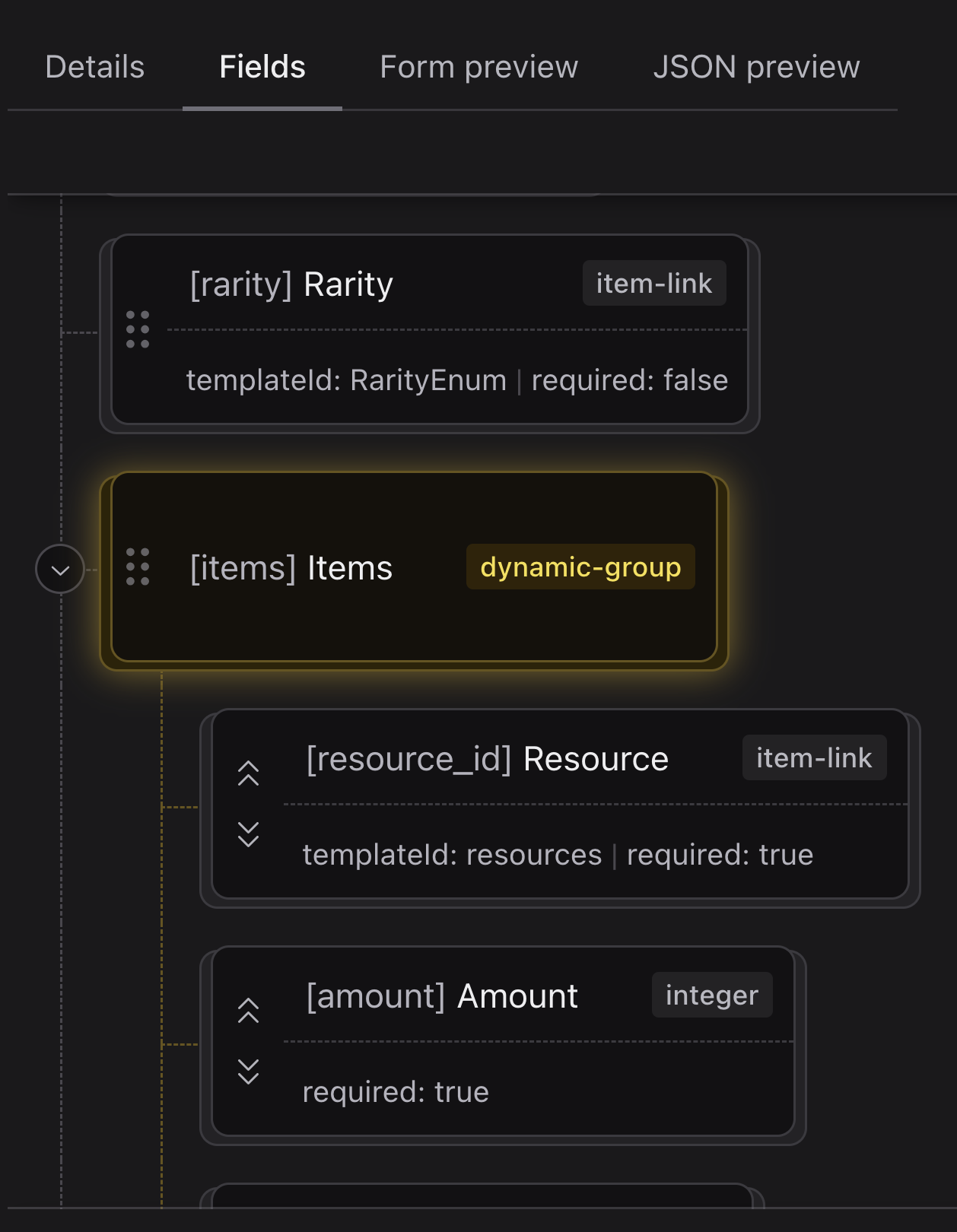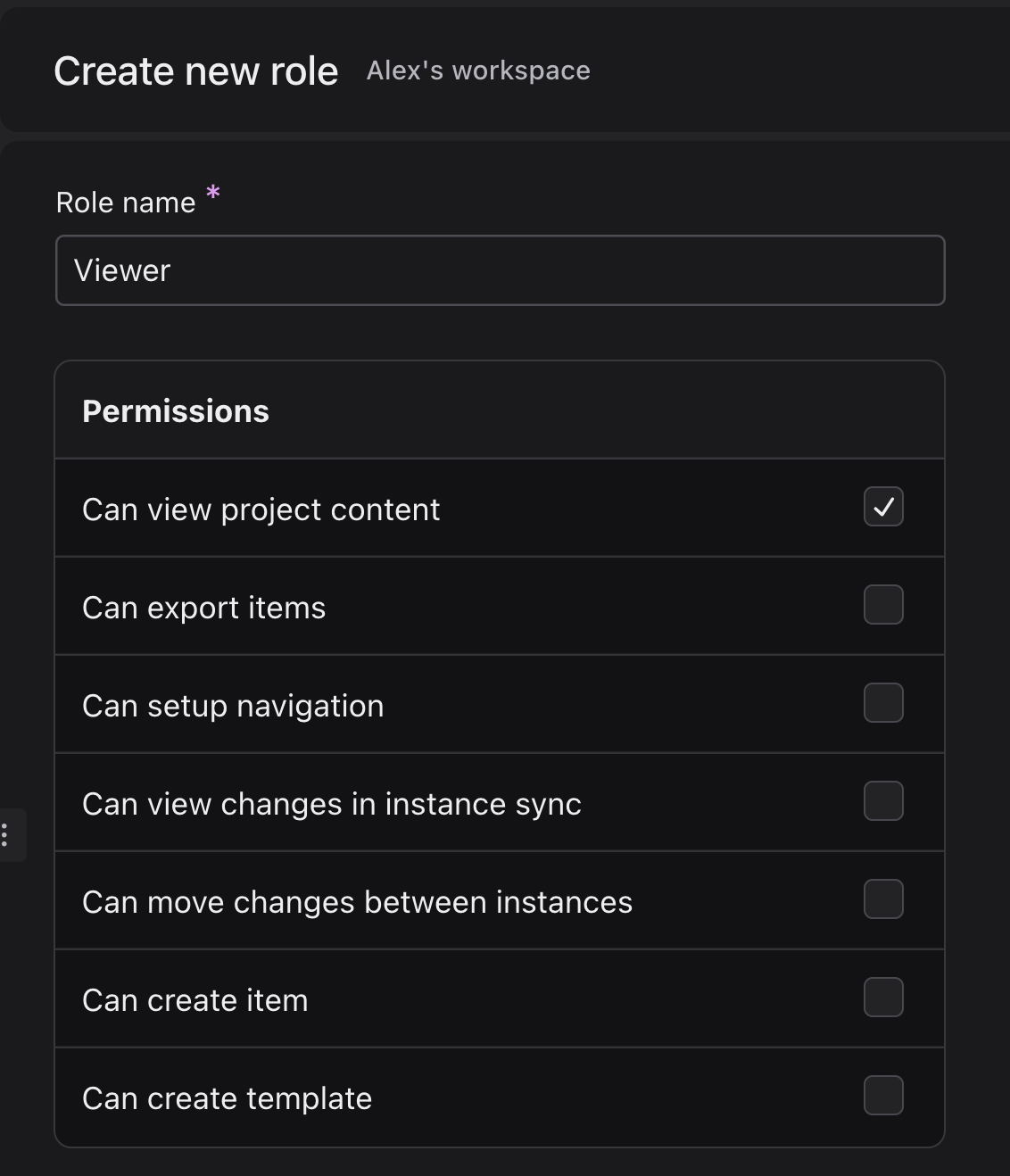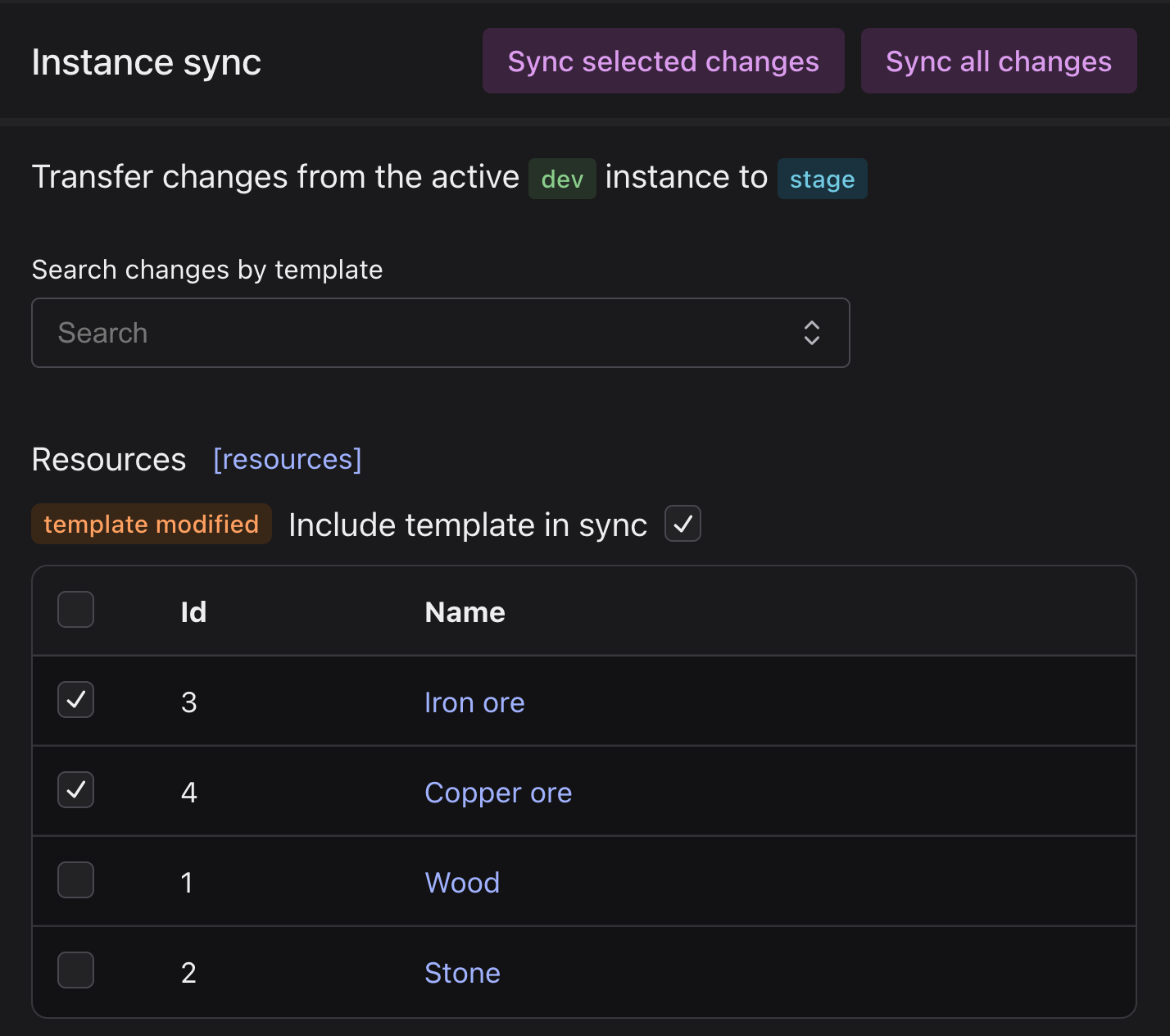Game CMS made simple
Organize and export your game data
Create templates, fill out items, and export JSON for reliable game data.
Ideal for both technical and non-technical teams.

Key features
Enhance your workflow with powerful capabilities
Design and customize templates
Consistent and efficient
Ensure uniform data formatting across your game and quickly generate multiple items from a single template
Error reduction
Implement field restrictions to minimize errors during item creation
Flexible structure
Create templates with nested groups and arrays for complex data structures
Form and JSON preview
Preview how items will appear and their JSON output before saving the template to ensure accuracy
Create and manage items with precision
Form-based items
Items are generated as forms based on predefined templates, ensuring consistency and accuracy
Quick item generation
Speed up the creation process by generating multiple items from a single template
Comprehensive item management
Easily edit, update, and organize items, including the ability to link items together for relational data structures
Error handling
Identify and correct errors in items efficiently to ensure data integrity
Export static data to JSON
Simple export process
Quickly export your items to JSON
Flexible access
Download JSON data via the web interface or API
Export versioning
Each export is assigned a unique ID for easy reference to specific version
Progress tracking
Monitor the export process with clear progress updates
Customize and control access with defined roles
Custom role creation
Define roles with specific permissions tailored to your project needs
Access control
Manage who can view, edit, and modify data within your projects and workspaces
Scalable permissions
Apply roles across multiple projects to ensure consistent access control
User management
Easily assign and update roles for users to maintain organized and secure data management
Manage your development, testing, and production environments
Environment separation
Maintain clear boundaries between development, testing, and production environments
Targeted syncing
Sync only what you need at the moment. When you're done with a new feature, synchronize everything in the staging environment for the next stage of testing. Make changes point by point to avoid accidental issues





